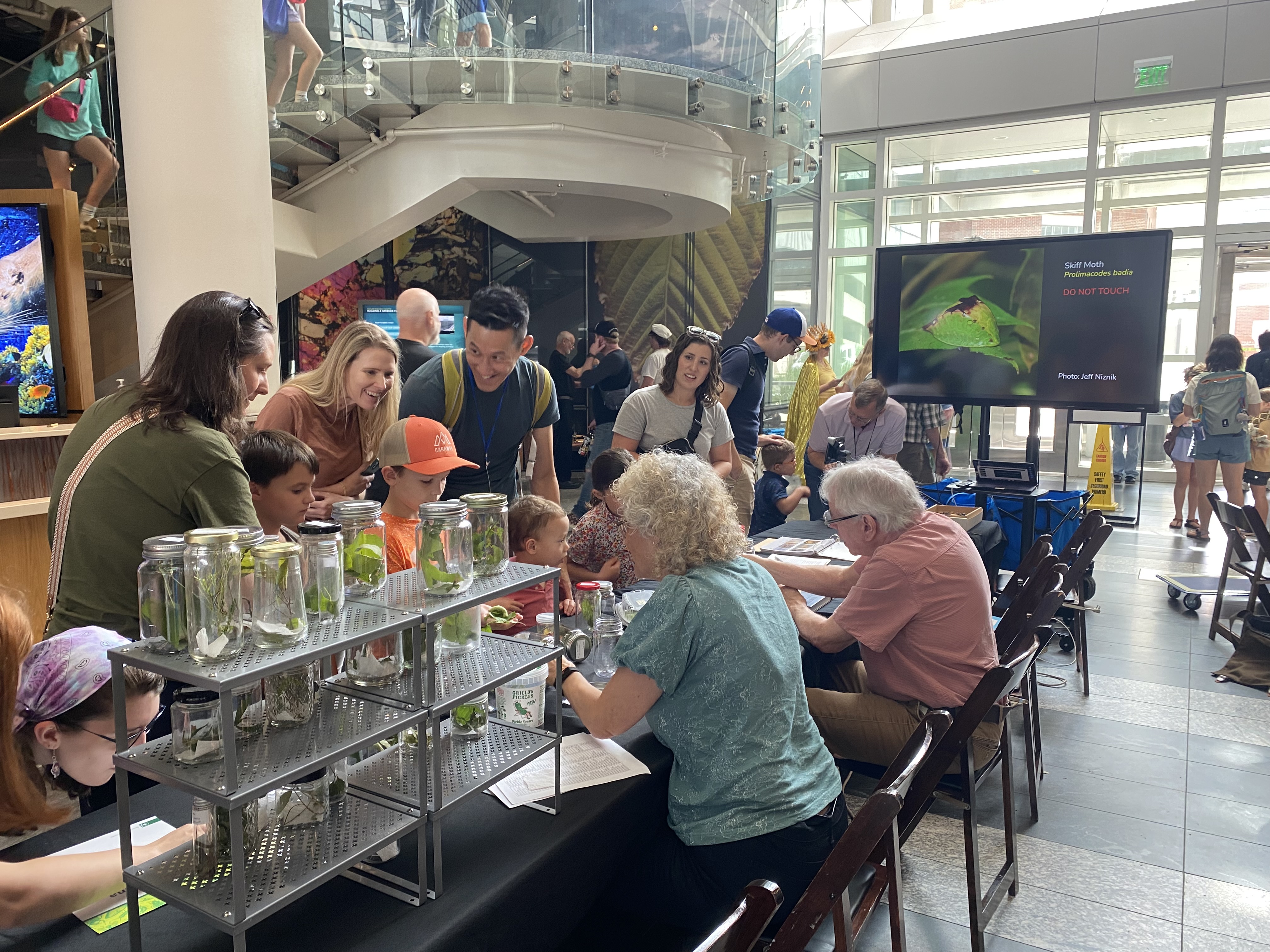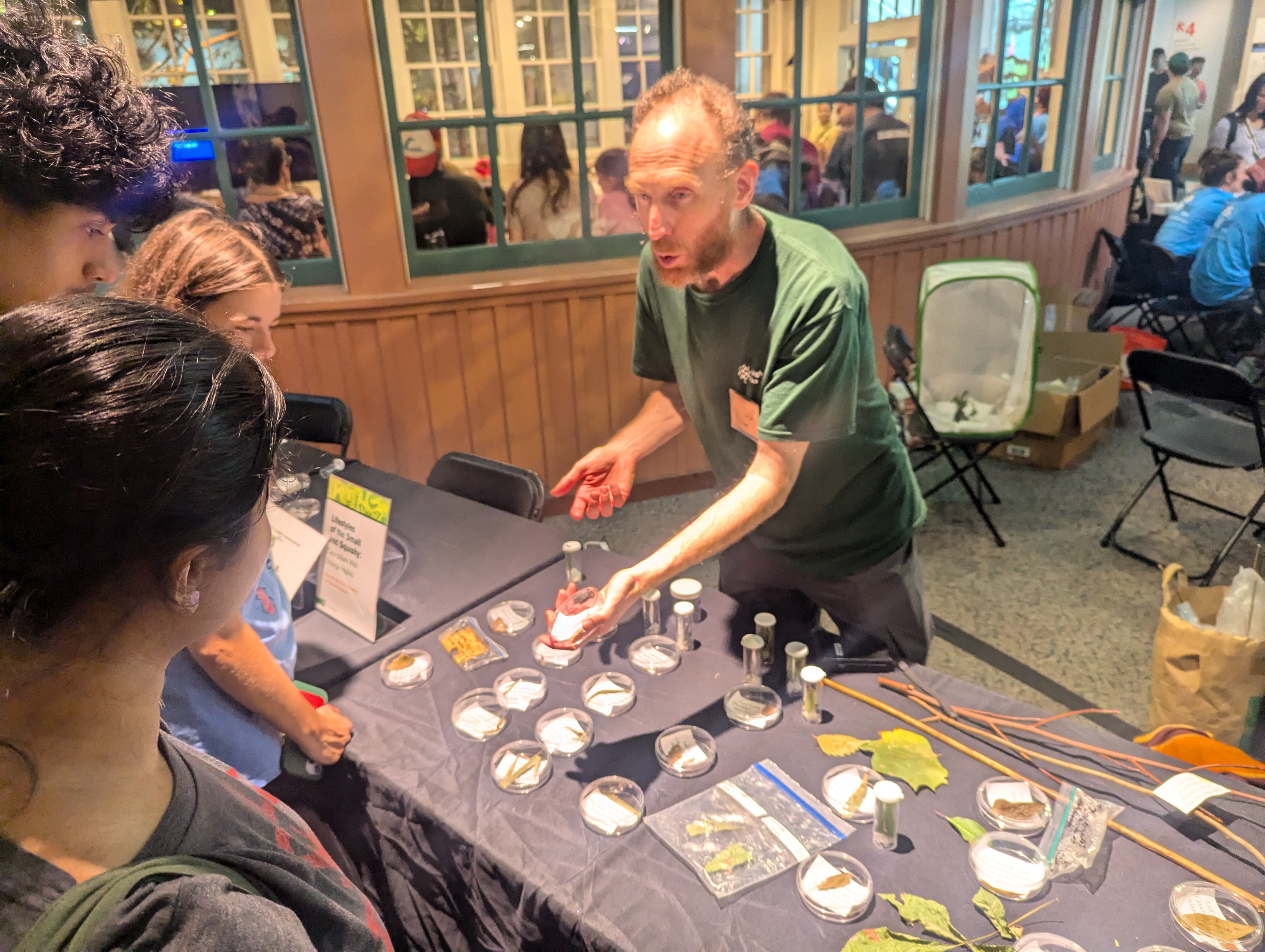BugFest!
The NCBP participated in this year's BugFest event at the NC Museum of Natural Sciences in Raleigh. We had two separate displays - one for moth caterpillars (David) and one for leaf-mining insects (Tracy).
Moths of NC (David)
 The theme of the event was Lepidoptera, so I spent the week collecting as many caterpillars as I could find. I managed to amass a menagerie of more than 50 species, including numerous sphinx and slug moths. Over 1,000 people came by our tables, and they seemed to have a lot of fun interacting with the caterpillars and learning about our native moth species. I was joined at the event by NCBP members Carol Tingley, Tom Howard, and Steve Hall, and Becky Watkins and Jeff Niznik also volunteered to work a shift. In addition to the caterpillars, we had a slide show and a microscope that could be used to look at specimens. It was an exhausting day, but we had a great time!
The theme of the event was Lepidoptera, so I spent the week collecting as many caterpillars as I could find. I managed to amass a menagerie of more than 50 species, including numerous sphinx and slug moths. Over 1,000 people came by our tables, and they seemed to have a lot of fun interacting with the caterpillars and learning about our native moth species. I was joined at the event by NCBP members Carol Tingley, Tom Howard, and Steve Hall, and Becky Watkins and Jeff Niznik also volunteered to work a shift. In addition to the caterpillars, we had a slide show and a microscope that could be used to look at specimens. It was an exhausting day, but we had a great time!

Pictured above (from left to right): Crowned Slug Moth (Isa textula), Imperial Moth (Eacles imperialis), and Snowberry Clearwing (Hemaris diffinis).
Lifestyles of the Small and Squishy (Tracy)

I staffed a table at BugFest with lots of examples of leaf-mining and gall-making insects, with some leaf-tying, case-making, and other herbivorous insects thrown in for good measure. I used these critters as a way of illustrating the following ideas: We are perched at the edge of a biodiversity hotspot, so we have the opportunity to conserve biodiversity through diverse native vegetation in our yards and green spaces. Plants are hotels for diverse plant-eating critters, and many critters eat plants in surprising and diverse ways. For instance, gall-makers use plant hormones to make controlled tumors with a constant supply of fresh food and shelter. Leaf-miners, leaf-tiers, and case-makers are variations on that theme, making shelters out of the leaf in one way or another and feeding from their hiding places. I explained how leaf-miners in particular deal with the problems of a confined space -- what they do with their poop, how they hide when pupating, and how they remain very small as adults after growing up in such a confined space. Also, because these critters are living "under the radar", undiscovered species are often right under our noses. I put in a plug for people to go out and find these insects in their back yards, and to document them on iNaturalist.
 I spoke with hundreds of people, diverse in all ways, especially their prior experience with insects. Most who stayed for the spiel were surprised, stating they were unaware that these critters existed, much less how cool they are. Some had seen galls or leaf miners before, and had wondered what they were. Most were surprised at how small the caterpillars were (Anarsioses aberrans, feeding in the microscope view while they watched), and how small (yet how beautiful) adults were (using Cosmopterix and Porphyrosela as examples). A few had seen leaf-miners before, and wanted more information on rearing them. Still others wanted to bring their grandkids to see these crazy critters. Many were surprised to see several examples of new species to science, discovered on common plants they probably see every day. It was long day, and my voice was reduced to a laryngitic whisper by the end of the day. It was worth it.
I spoke with hundreds of people, diverse in all ways, especially their prior experience with insects. Most who stayed for the spiel were surprised, stating they were unaware that these critters existed, much less how cool they are. Some had seen galls or leaf miners before, and had wondered what they were. Most were surprised at how small the caterpillars were (Anarsioses aberrans, feeding in the microscope view while they watched), and how small (yet how beautiful) adults were (using Cosmopterix and Porphyrosela as examples). A few had seen leaf-miners before, and wanted more information on rearing them. Still others wanted to bring their grandkids to see these crazy critters. Many were surprised to see several examples of new species to science, discovered on common plants they probably see every day. It was long day, and my voice was reduced to a laryngitic whisper by the end of the day. It was worth it.